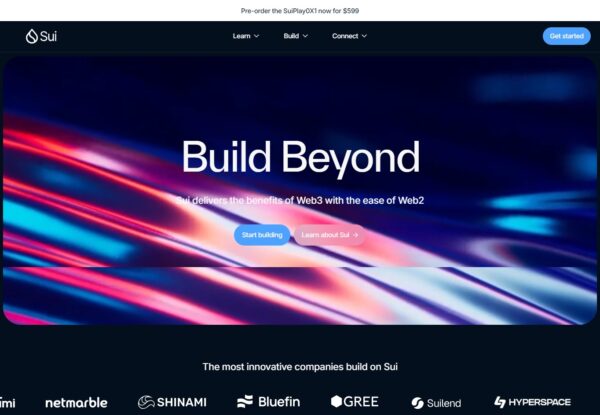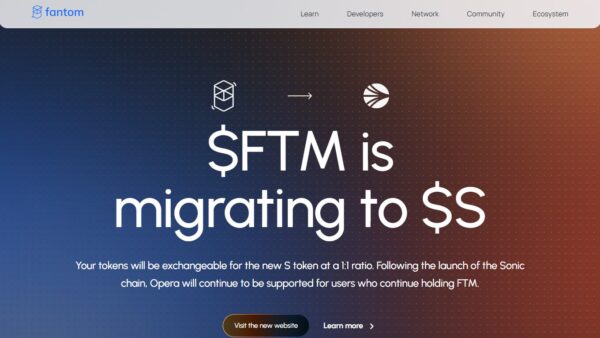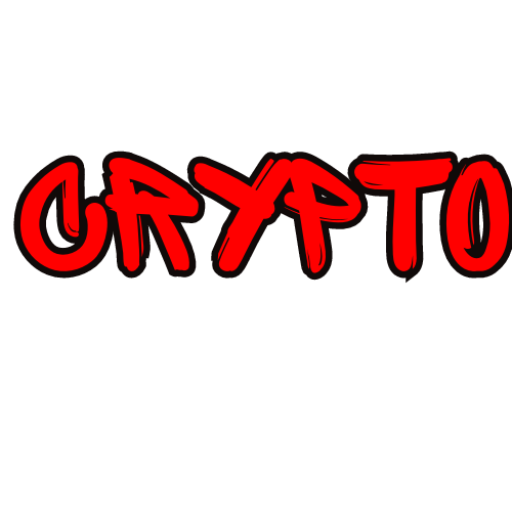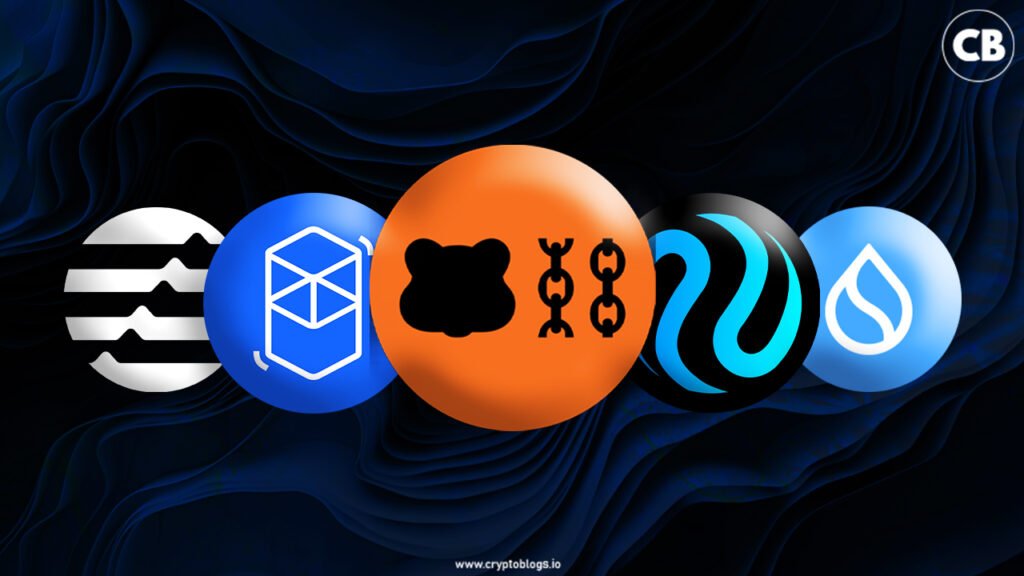The blockchain landscape is in a constant state of flux with emerging projects competing to become the next significant player in the ecosystem. Over the past years, Ethereum emerged as a top contender in the space which is now seemingly out passed by Solana. With offering solutions to the persistent issues, Solana has come out as a leading blockchain platform that has robust scalability and almost zero transaction costs that plague many blockchain networks.
However, as blockchain technology continues to mature, new platforms are rising with the potential to outpace Solana by addressing its weaknesses and pushing forward innovation. These emerging blockchains are experimenting with novel consensus mechanisms, improved scalability solutions, and better integration with real-world use cases. These features make them a serious contender in the emerging blockchain landscape and fuel the primitive of “next Solana.”
In this blog post, we will explore top five projects that are well-positioned to challenge Solana’s dominance. But first, let’s understand what holds Solana at top position despite it being so young blockchain compared to Ethereum and other networks;
Solana – The Leading New Generation Blockchain
Solana remains one of the leading blockchains with offering extremely fast transaction speeds and low costs. Thanks to its unique Proof of History (PoH) consensus mechanism that has enabled industry grade security for a unique blockchain infrastructure. Solana supports a vast array of decentralized applications (dApps), particularly in the realms of DeFi, NFTs, and gaming.
Despite facing challenges like network congestion and outages, Solana has consistently recovered and grown its ecosystem, positioning itself as a key player in Web3. But the competition is intensifying now as new blockchain projects have been entering the industry with addressing key issues that users face.
Let’s take a look at the those top five blockchains that are becoming popular and could potentially become the next Solana;
Top 5 Blockchain To Replace Solana
1. SUI

SUI is a highly innovative Layer 1 blockchain, praised for its parallel transaction processing and object-oriented architecture. Unlike most blockchains that process transactions sequentially, SUI processes multiple transactions simultaneously. This functionality makes it highly scalable and efficient during periods of high network activity.
One of SUI’s key technical features is its Narwhal and Bullshark consensus system, which enhances network efficiency by speeding up transaction processing and ensuring data is cryptographically available for verification. SUI’s focus on gasless transactions and zero-knowledge proof (ZK) integration gives it a unique edge in making blockchain more accessible and private.
Sui currently has a market cap of $4.7 billion – as per data from Coinmarketcap – and it is expected to reach a $10 billion market cap in the next few months.
2. Aptos

Often referred to as a “Solana killer,” Aptos is a Layer 1 blockchain designed for scalability and speed. It features a novel and robust Move programming language for smart contracts. The unique architecture of Aptos allows transaction processing in parallel – similar to that of SUI – while focusing heavily on security and ease of developer use.
Aptos utilizes a BFT (Byzantine Fault Tolerance) consensus mechanism, which allows it to finalize transactions rapidly without compromising security. This innovative blockchain also prioritizes upgradability in its smart contract system, making it future-proof by allowing the ecosystem to adapt to changing needs without disrupting ongoing processes.
As per coinmarketcap data, the market cap of Aptos is $4 billion and it has plenty of room to grow further in coming months.
3. Cardano

Cardano is a long-standing blockchain project with a heavy emphasis on academic research and peer-reviewed protocols. Its Ouroboros PoS consensus is energy-efficient and designed to offer high throughput. While Cardano’s progress has been slower due to its cautious approach, its layered architecture (settlement layer and computation layer) provides unique flexibility and security.
Cardano’s focus on formal methods and Haskell-based smart contracts makes it one of the most secure and decentralized blockchain platforms. Its Hydra scaling solution could be the key to unlocking millions of transactions per second, potentially positioning it as a direct competitor to Solana in the future.
Among all five blockchain networks listed here, Cardano is well positioned among all while being in top 10 blockchain projects besides Ethereum, Bitcoin and Solana. It has a market cap of $13.8 billion.
4. The Open Network (TON)

Initially developed by the creators of Telegram, TON (The Open Network) is a scalable multi-blockchain platform. It uses sharding to dynamically split its blockchain into smaller, faster chains when needed – similar to Ethereum’s roadmap for scalability. TON’s Proof-of-Stake consensus also allows it to handle a high number of transactions per second.
This project is designed to support massive Web3 applications, with a focus on decentralized storage, DNS, and micropayments. Its user base from Telegram also gives it a strong foundation to expand into mainstream adoption, a factor that could boost it ahead of other blockchains.
Due to the popularity of various Telegram-based mini games – which all mostly launched within TON – this blockchain has become one of the most popular in recent months. TON has a market cap of $14.4 billion and it is currently the 7th largest blockchain network in the industry.
Also read: Exploring The Open Network ‘TON Chain’ and Power of TONcoin
5. Fantom

Fantom has quickly established itself as a leading blockchain due to its novel Lachesis consensus protocol and Directed Acyclic Graph (DAG) architecture. This innovative facility allows for near-instant transaction finality and high throughput. It enables asynchronous processing with the network handling thousands of transactions per second while maintaining decentralization and security. The low transaction fees and thriving ecosystem have made Fanrom a popular choice for DeFi, dApps, and cross-chain integrations.
Furthermore, Fantom’s upcoming SONIC upgrade aims to further solidify its position as a major player by improving network throughput and optimizing validator incentives. This upgrade is expected to drastically reduce latency and enhance the platform’s performance, making it even more attractive for developers and users alike. All these features position Fantom to compete with other leading blockchains likes of Solana, especially by meeting demand for scalable, adaptable and low-cost solutions for Web3 applications.
Fantom is apparently far away in the list to become next Solana but it has massive room to accelerate and grow in coming months. Fantom currently has a market cap of $1.9 billion – according to data from Coinmarketcap.
Conclusion
While Solana continues to lead in areas like speed and low-cost transactions, the blockchain space is highly competitive. Projects like SUI with its cutting-edge parallel processing and TON with its unique sharding architecture are pushing the boundaries of blockchain innovation.
As these blockchains continue to develop, they have the potential to shape the next wave of decentralized applications and may eventually rival Solana’s dominance in the space. Each of these projects brings something unique to the table, making them strong contenders for the title of “next Solana.”
You Might Be Like:
Top 5 Most Undervalued Layer 1 Blockchain Projects



